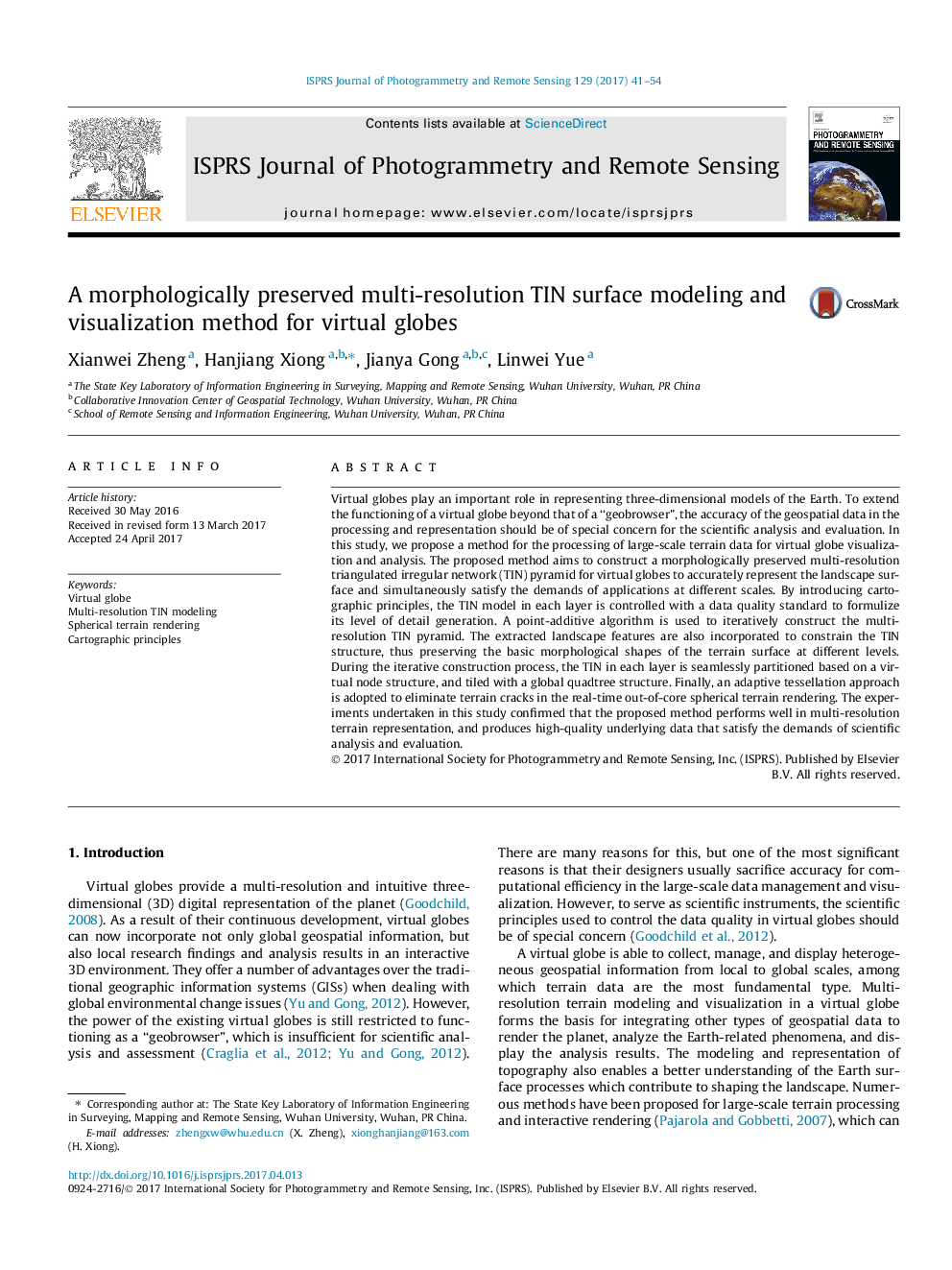| Article ID | Journal | Published Year | Pages | File Type |
|---|---|---|---|---|
| 4972920 | ISPRS Journal of Photogrammetry and Remote Sensing | 2017 | 14 Pages |
Abstract
Virtual globes play an important role in representing three-dimensional models of the Earth. To extend the functioning of a virtual globe beyond that of a “geobrowser”, the accuracy of the geospatial data in the processing and representation should be of special concern for the scientific analysis and evaluation. In this study, we propose a method for the processing of large-scale terrain data for virtual globe visualization and analysis. The proposed method aims to construct a morphologically preserved multi-resolution triangulated irregular network (TIN) pyramid for virtual globes to accurately represent the landscape surface and simultaneously satisfy the demands of applications at different scales. By introducing cartographic principles, the TIN model in each layer is controlled with a data quality standard to formulize its level of detail generation. A point-additive algorithm is used to iteratively construct the multi-resolution TIN pyramid. The extracted landscape features are also incorporated to constrain the TIN structure, thus preserving the basic morphological shapes of the terrain surface at different levels. During the iterative construction process, the TIN in each layer is seamlessly partitioned based on a virtual node structure, and tiled with a global quadtree structure. Finally, an adaptive tessellation approach is adopted to eliminate terrain cracks in the real-time out-of-core spherical terrain rendering. The experiments undertaken in this study confirmed that the proposed method performs well in multi-resolution terrain representation, and produces high-quality underlying data that satisfy the demands of scientific analysis and evaluation.
Keywords
Related Topics
Physical Sciences and Engineering
Computer Science
Information Systems
Authors
Xianwei Zheng, Hanjiang Xiong, Jianya Gong, Linwei Yue,
